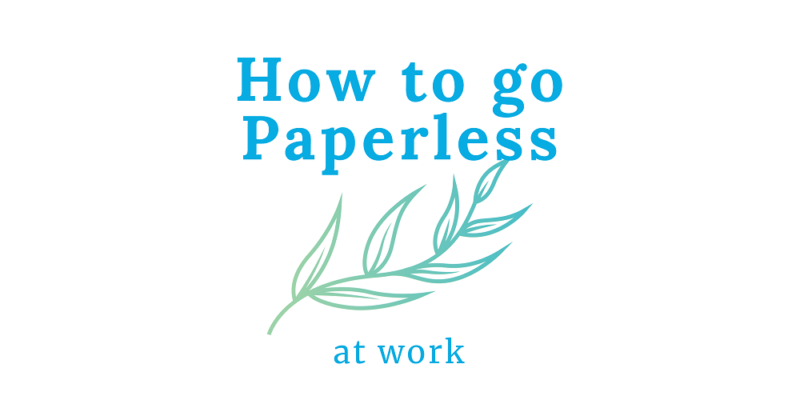The idea of working in a paperless environment was something many thought was impossible about two or three decades ago. Offices tended to have a lot of paper laying around in workstations, boxes, and shelves. It was as if the more work an office handled, the more paper they have to use. Everything was documented in writing.
Then came a new era which started in 1975, when Business Week Magazine predicted an “Office of the Future” with no paper in sight. People who were around and fortunate to read the piece thought the idea was inconceivable, but over the last three decades, paperless offices are actually the new normal.
Working without having to document every information on paper makes work a lot easier. Office admins are also able to perform a quick search for documents using technology, and every other activity becomes much more seamless.
5 Ways to operate without using Papers
Here are proven and tested ways to go paperless in your office using online tools powered by software technology and applications.
- 1- Utilize Note-taking Apps
Engineers and construction experts do a lot of note-taking and information scribbling. To go paperless, be more pragmatic to your approach of note-taking by going digital. This will save you a lot of time and stress instead of filling your cabinet with piles of paper. These apps also allow you to add users who can view or edit what you have written.
- 2- Use Mobile Apps to save the Business Cards of your clients or prospects
We take and receive business cards almost on a daily basis as we look to establish business relationships. While this is a noble endeavor, we tend to forget or misplace many of the business cards that we receive. And when there is an urgent need to establish contact with the person who gave is the card, we are unable to because……the card is missing. Rather than collect physical cards, you can capture them with your phone’s camera. There are even modern apps that use Optical Recognition software to scan and save cards on your smartphone.
- 3- Cloud Sharing Software/Instant Messaging helps you cut down on printed reports, memos and documents
Construction companies handle a lot of correspondence, which is why industry leaders are increasingly leveraging the power of IT to make information gathering and dissemination a lot quicker. To effectively communicate with others, applications like Zoom, Microsoft Teams, GoToMeeting or Webex are other useful alternatives that are just as efficient.
- 4- Project Management Apps are more efficient than handwritten plans
Managing tasks take a lot of time. You don’t have to add to your workload by writing down plans or recording progress by hand. The traditional way of documentation is giving room to IT, and you should flow with the trend too. There are Project Management Apps features like Gantt Charts, Tasks, Agile Management, and much more online today. A simple search online will provide very reliable management tools that constructors have come to trust over the years.
- 5- Utilize technology-driven communication tools
In the past, a handwritten message was the only non-verbal means of instant messaging in the workplace. This was especially the case at worksites with noisy machines at work. While handwritten notes got the job done, they created a lot of waste lying around work areas. And this was indeed a very slow means of communication.
If you want your workplace to be environment friendly, utilize technology tools for safer and faster communication. Encourage your staff to use tools like emails, digital forms, and even text messages to send instant messages across to others.
The days of writing down lengthy reports and memos are long gone. Today, you can improve interaction and data gathering or dissemination using interactive applications like instant messenger, project management tools, and infographics like Gantt Charts to simply project execution.
This Risks of going paperless
As with any new technology, there is inherent risk with going digital. Good IT managers will ensure there is a certain level of redundancy when it comes to backing up and preparing for disaster recovery. Some processes require in-person verification and some computer software makes it difficult to verify the identify of the user. You’ll need to use your best judgement when deciding which processes would excel in a paperless environment, and which will not.
What are some challenges you’ve had when going paperless at work? Let us know in the comments section below!



